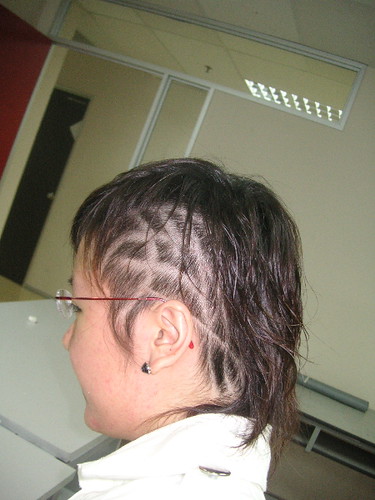Today, the Comanche Nation consists of 14,700 members (2010 enrollment figures), about half of whom live in Oklahoma. The remainder are concentrated in Texas, California, and New Mexico. The tribe is headquartered in Lawton, Oklahoma. The Comanche Nation Homecoming Powwow is held annually in Walters, Oklahoma in mid-July. The Comanche speak the Comanche language, a Numic language of the Uto-Aztecan family, sometimes classified as a Shoshone dialect.
Their original migration took them to the southern Great Plains, into a sweep of territory extending from the Arkansas River to central Texas. During that time, their population increased dramatically because of the abundance of buffalo, an influx of Shoshone migrants, and the adoption of significant numbers of women and children taken captive from rival groups. The Comanche never formed a single cohesive tribal unit but were divided into almost a dozen autonomous groups, called bands. These groups shared the same language and culture, and rarely fought each other.
The horse was a key element in the emergence of a distinctive Comanche culture. Some scholars have suggested the Comanche broke away from the Shoshone and moved southward to search for additional sources of horses among the settlers of New Spain to the south (rather than search for new herds of buffalo.) The Comanche may have been the first group of Plains natives to fully incorporate the horse into their culture and to have introduced the animal to the other Plains peoples.
By the mid-19th century, the Comanche were supplying horses to French and American traders and settlers and later to migrants passing through their territory on the way to the California Gold Rush. The Comanche had stolen many of the horses from other tribes and settlers; they earned their reputation as formidable horse, and later, cattle thieves. Their stealing of livestock from Spanish and American settlers, as well as the other Plains tribes, often led to war.
The Comanche also had access to vast numbers of feral horses, which numbered approximately 2,000,000 in and around Comancheria. In the late 18th and early 19th centuries, the Comanche lifestyle required about one horse per person. With a population of about 30,000 to 40,000 and in possession of herds many times that number, the Comanche had a surplus of about 90,000 to 120,000 horses.
They were formidable opponents who developed strategies for using traditional weapons for fighting on horseback. Warfare was a major part of Comanche life. Comanche raids into Mexico traditionally took place during the full moon, when the Comanche could see to ride at night. This led to the term "Comanche Moon," during which the Comanche raided for horses, captives, and weapons. The majority of Comanche raids into Mexico were in the state of Chihuahua and neighboring northern states.
Following as example of such political and kinship-based division, one should mention the Yaparʉhka, who formed their own identity as a separate division. Because of cultural and linguistic differences from other Comanche bands, they became the "(Yap)Root-Eaters", in contrast to the Kʉhtsʉtʉhka ("Buffalo-Eaters"). The Yaparʉhka division was composed of several residential local groups such as the Ketahtoh Tʉ, Motso Tʉ and Pibianigwai. In contrast to the neighboring Cheyenne and Arapaho to the north, the Comanches never developed a political idea of forming a nation or tribe. Comanches recognized each other as Nʉmʉnʉ and seldom fought against each other; however, this did not mean that the Kwaarʉ Nʉʉ pursued the same policy against the Spanish and Indian settlements in New Mexico as did the Kʉhtsʉtʉhka. As a consequence, later, just as the Comanche society was breaking down, the once respected and feared Penatʉka Nʉʉ provided U.S. Army Indian Scouts for the Americans and Texans against their still fighting and free-roaming Comanche kin. The band was the primary social unit of the Comanches. A typical band might number about one hundred people. Bands were part of larger divisions, or tribes. Before the 1750s, there were three Comanche divisions: Yamparikas, Jupes, and Kotsotekas. In the 1750s and 1760s, a number of Kotsoteka bands split off and moved to the southeast. This resulted in a large division between the original group, the western Comanches, and the break away Kotsotekas, the eastern Comanches. The western Comanches lived in the region of the upper Arkansas River, Canadian River, and Red River, and the Llano Estacado. The eastern Comanches lived on the Edwards Plateau and the Texas plains of the upper Brazos River and Colorado River., and east to the Cross Timbers.
Their original migration took them to the southern Great Plains, into a sweep of territory extending from the Arkansas River to central Texas. During that time, their population increased dramatically because of the abundance of buffalo, an influx of Shoshone migrants, and the adoption of significant numbers of women and children taken captive from rival groups. The Comanche never formed a single cohesive tribal unit but were divided into almost a dozen autonomous groups, called bands. These groups shared the same language and culture, and rarely fought each other.
The horse was a key element in the emergence of a distinctive Comanche culture. Some scholars have suggested the Comanche broke away from the Shoshone and moved southward to search for additional sources of horses among the settlers of New Spain to the south (rather than search for new herds of buffalo.) The Comanche may have been the first group of Plains natives to fully incorporate the horse into their culture and to have introduced the animal to the other Plains peoples.
 That\x26#39;s pretty cool I guess, |  That\x26#39;s pretty cool I guess, |  and other cool designs. |  Hair Designs Must Suit Your |  Extreme Hair Designs |
 cool shaved hair designs |  Cool Hair |  Shaved body hair designs |  Cool Hair |  really cool mehndi designs |
They were formidable opponents who developed strategies for using traditional weapons for fighting on horseback. Warfare was a major part of Comanche life. Comanche raids into Mexico traditionally took place during the full moon, when the Comanche could see to ride at night. This led to the term "Comanche Moon," during which the Comanche raided for horses, captives, and weapons. The majority of Comanche raids into Mexico were in the state of Chihuahua and neighboring northern states.
new designs and hair |  2010 hair designs Think of all |  cool hair designs for boys |  hair designs review Cool |  cool LONG CURLY SOFT HAIR FULL |
 Punks Hair Cool Tattoo Art |  Hair Tattoo Art Design Anyone |  Cool+guy+hair+designs hair |  Tetris Hair. Tetris Design |  do cool nail designs |












No comments:
Post a Comment